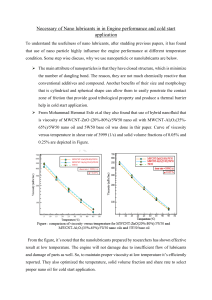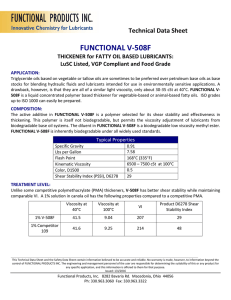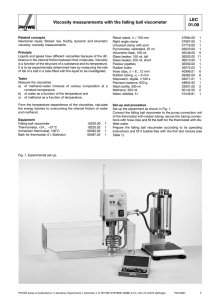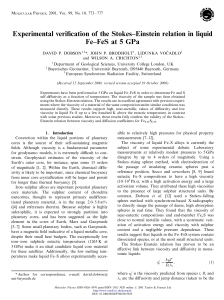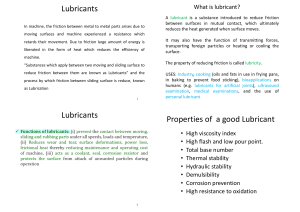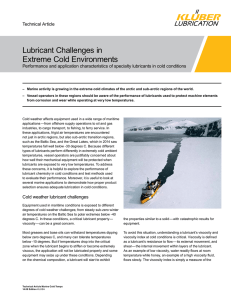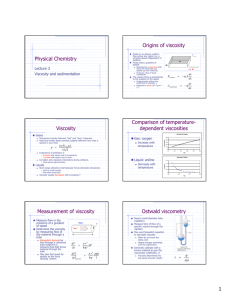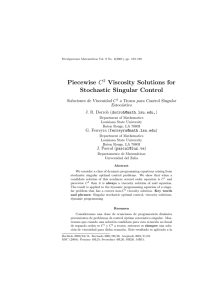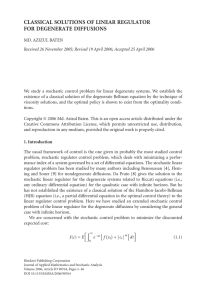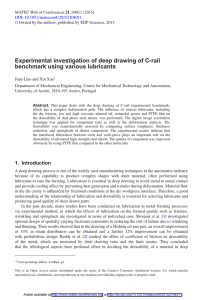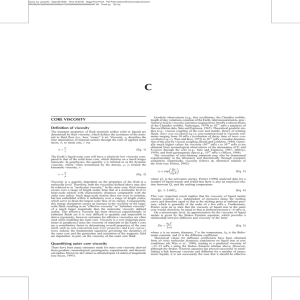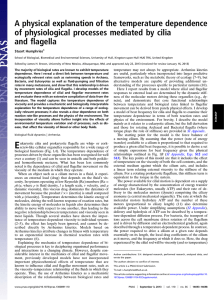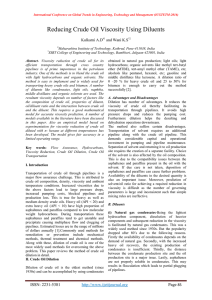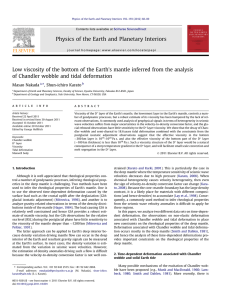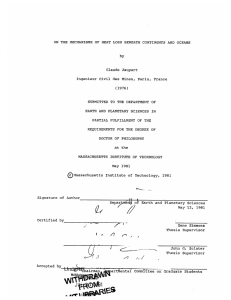Viscosity Temperature Graphs of Lubricants
advertisement
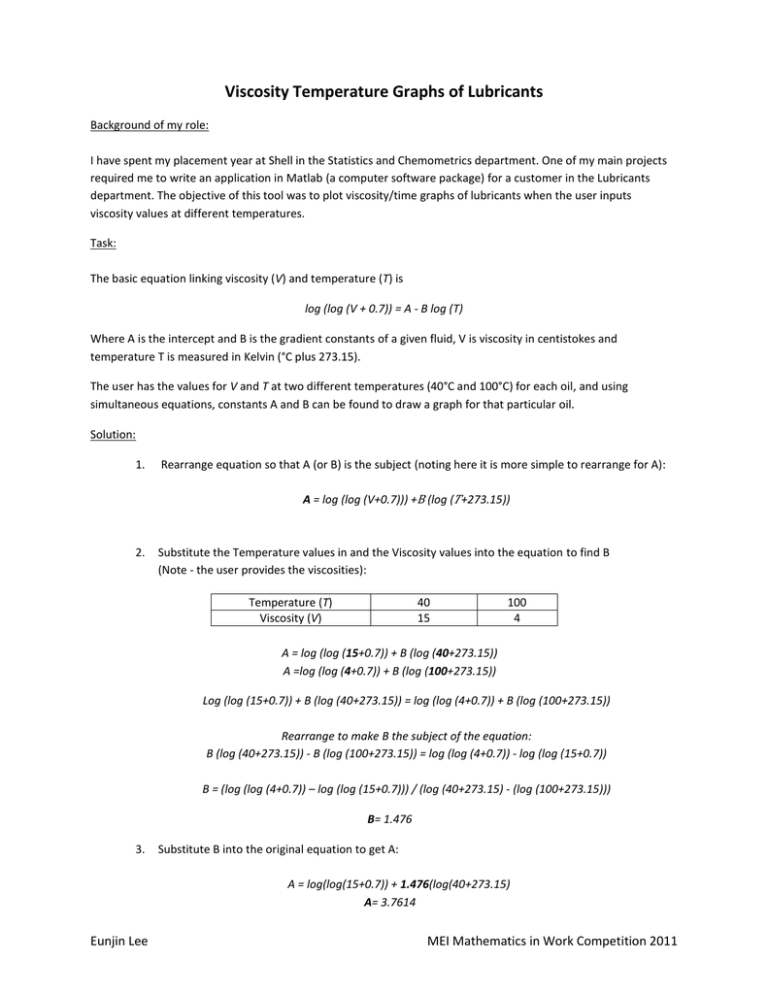
Viscosity Temperature Graphs of Lubricants Background of my role: I have spent my placement year at Shell in the Statistics and Chemometrics department. One of my main projects required me to write an application in Matlab (a computer software package) for a customer in the Lubricants department. The objective of this tool was to plot viscosity/time graphs of lubricants when the user inputs viscosity values at different temperatures. Task: The basic equation linking viscosity (V) and temperature (T) is log (log (V + 0.7)) = A - B log (T) Where A is the intercept and B is the gradient constants of a given fluid, V is viscosity in centistokes and temperature T is measured in Kelvin (°C plus 273.15). The user has the values for V and T at two different temperatures (40°C and 100°C) for each oil, and using simultaneous equations, constants A and B can be found to draw a graph for that particular oil. Solution: 1. Rearrange equation so that A (or B) is the subject (noting here it is more simple to rearrange for A): A = log (log (V+0.7))) +B (log (𝑇+273.15)) 2. Substitute the Temperature values in and the Viscosity values into the equation to find B (Note - the user provides the viscosities): Temperature (T) Viscosity (V) 40 15 100 4 A = log (log (15+0.7)) + B (log (40+273.15)) A =log (log (4+0.7)) + B (log (100+273.15)) Log (log (15+0.7)) + B (log (40+273.15)) = log (log (4+0.7)) + B (log (100+273.15)) Rearrange to make B the subject of the equation: B (log (40+273.15)) - B (log (100+273.15)) = log (log (4+0.7)) - log (log (15+0.7)) B = (log (log (4+0.7)) – log (log (15+0.7))) / (log (40+273.15) - (log (100+273.15))) B= 1.476 3. Substitute B into the original equation to get A: A = log(log(15+0.7)) + 1.476(log(40+273.15) A= 3.7614 Eunjin Lee MEI Mathematics in Work Competition 2011 Now that we have the intercept and gradient constants of the equation, we can draw the graph on a double log-y axes: Note that it is not a log-log graph; the x-axis is linear but the y-axis has a double log scale which means that is has been logged and then logged again. This is because we are plotting loglog (V + 0.7) against -log (T), which is a straight line of gradient B and intercept A, but the axes are labeled with normal temperature and viscosity values, hence the non-linear scaling. This is a smaller example of a .PNG file that my application exports. I have coded the calculation steps into a Matlab .EXE file so that the all the user has to do is pick which lines to plot and input the two viscosities. Below is a screenshot of my Graphical User Interface application: Eunjin Lee MEI Mathematics in Work Competition 2011






